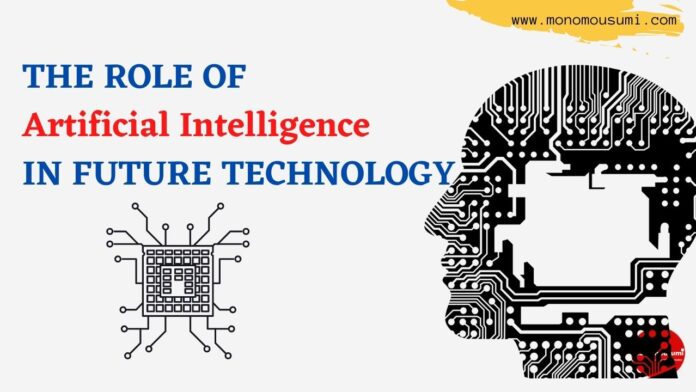Introduction
Technology has reinvigorated our lives. Artificial Intelligence is reshaping the future of every sector. AI will serve as the impulse for emerging technologies like robotics, IoT, etc. AI benefits the world either directly or indirectly. It will transform the world more than anything in the history of humankind.
AI- the future of technology
AI can play a notable role in every single future technology. With the advent of AI, intelligent machines will perform every task just like our humans. AI will rejuvenate innumerable technologies like
• Internet of Things IoT
• Autonomous Vehicle
• Holography
• Weather prediction
• Robotics
• Healthcare
Internet of Things
IoT is a system of interrelated software, sensors and electronic devices that exchange data via the internet or communication channels like optical cables, antennas, etc. The convergence of IoT and AI enables the devices to learn from their data. By merging AI with IoT allows the collection of a multitude of data from outnumbered devices. Infusing intelligence into the IoT makes the tasks fined-tuned to raise the operating efficiency. It can also reduce redundancy and time consumption. IoT embedded with AI ensures clear insights from data. It also maintains confidentiality and data privacy. Thus it is free from cyber and malicious attacks. The conjunction of AI and IoT is the Artificial Intelligence of Things which can improve human-machine interactions.
Corporate Database Systems
In the future, AI can play a significant role in managing database systems in high corporate spaces. These areas often deal with sensitive data, and with the help of artificial intelligence, it will be possible to monitor and trace all data points effectively. Integrating AI with vector database systems will make it convenient to securely store, trace, and analyze all information. It will also be possible to run AI with open source vector database systems to make them more accessible for all businesses and corporate institutions.
Autonomous Vehicle
The automobile industry has witnessed tremendous growth due to advanced technological inventions. Next-generation cars will offer transportation, safety and comfort. Self-driving is the most emerging technology in the automotive industry. Many car manufacturing companies are developing autonomous driving features to be incorporated into their cars. AI-powered self-driving cars can sense the ever-changing traffic conditions on roads and take appropriate decisions for navigation without any human input. Humans aren’t required to take control of them. They can go anywhere. Autonomous vehicles can be driven correspondingly to various traffic signs and divisions on lanes.
Holography
Holography is the creation of three-dimensional images without the use of the lens. The fusion of AI and Augmented Reality can produce interactive real-time 3D personas. Holograms are the resultants of the interference of light beams. Generation of a holographic video may require the use of supercomputers worth of computing speed but by the usage of AI, the computing speed can be increased without the need for supercomputers. In the Computer-Generated Holography CGH, there is a trade-off between runtime and image quality. Neural networks are the subfield of AI modelled similar to neurons. By infusing neural networks into holography, colourful high-resolution holographic visuals can be accomplished in real-time.
Weather prediction
Weather prediction is a volatile and complex phenomenon that requires a tremendous amount of data to evaluate. The traditional weather prediction methods using computer hardware takes more time to compute. Deep weather forecast using neural networks can significantly reduce the computation to milliseconds. Machine Learning is a subset of Artificial Intelligence that can predict the output with the help of provided input data. Deploying Machine Learning with weather prediction enables complex data analysis and accurate prediction of temperature, moisture, wind speed etc.
Robotics
Robots are engineered to perform a slew of functions without human intervention. Robots serve as the substitute for humans with the skill of replicating human actions. They are programmed with the intelligence to sense and act as per the environment. Computer vision is a field in AI that enables robots to understand and interpret their surrounding. Integration of robotics with AI reduces errors and improves the quality of work. Robotics mainly focuses on task precision. AI with robotics is the propellant for future technology. Robotics and automation is the ruling technology for atomic energy, space technology, manufacturing industries. Industrial automation will dominate the manufacturing sectors of the world. Even the top Multinational firms like Microsoft, Amazon are investing in AI-based automation. Hence AI can impact the workforce structure.
Healthcare
AI is a boon to the healthcare industry. AI in healthcare opens the door for early detection and diagnosis applications. AI facilitates analyzation of medical data like radiology images, blood tests, genomics etc. AI-enhanced microscopes can scan and identify fatal bacteria like E. coli, staphylococcus from the blood samples at a faster rate with high accuracy. AI technology can undertake complicated surgeries as it doesn’t suffer from burnout like humans do and can deliver impeccable precision performance.
Conclusion
AI will drive the future of technologies like healthcare, automation, etc. AI can expand the benefits of multiple growing technologies. Thus AI is all set to bestow a technologically well-developed life.
By KIRUTHIKA S
Write and Win: Participate in Creative writing Contest & International Essay Contest and win fabulous prizes.
















